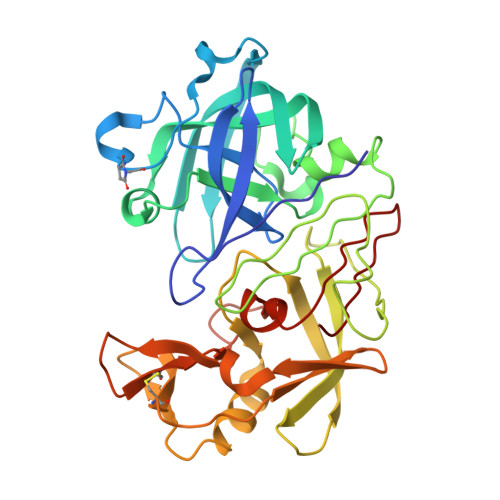Atomic Resolution Analysis of the Catalytic Site of an Aspartic Proteinase and an Unexpected Mode of Binding by Short Peptides
Erskine, P.T., Coates, L., Mall, S., Gill, R.S., Wood, S.P., Myles, D.A.A., Cooper, J.B.(2003) Protein Sci 12: 1741
- PubMed: 12876323
- DOI: https://doi.org/10.1110/ps.0305203
- Primary Citation of Related Structures:
1OEW, 1OEX - PubMed Abstract:
The X-ray structures of native endothiapepsin and a complex with a hydroxyethylene transition state analog inhibitor (H261) have been determined at atomic resolution. Unrestrained refinement of the carboxyl groups of the enzyme by using the atomic resolution data indicates that both catalytic aspartates in the native enzyme share a single negative charge equally; that is, in the crystal, one half of the active sites have Asp 32 ionized and the other half have Asp 215 ionized. The electron density map of the native enzyme refined at 0.9 A resolution demonstrates that there is a short peptide (probably Ser-Thr) bound noncovalently in the active site cleft. The N-terminal nitrogen of the dipeptide interacts with the aspartate diad of the enzyme by hydrogen bonds involving the carboxyl of Asp 215 and the catalytic water molecule. This is consistent with classical findings that the aspartic proteinases can be inhibited weakly by short peptides and that these enzymes can catalyze transpeptidation reactions. The dipeptide may originate from autolysis of the N-terminal Ser-Thr sequence of the enzyme during crystallization.
- Division of Biochemistry and Molecular Biology, School of Biological Sciences, University of Southampton, Bassett Crescent East, Southampton SO16 7PX, UK.
Organizational Affiliation:





















